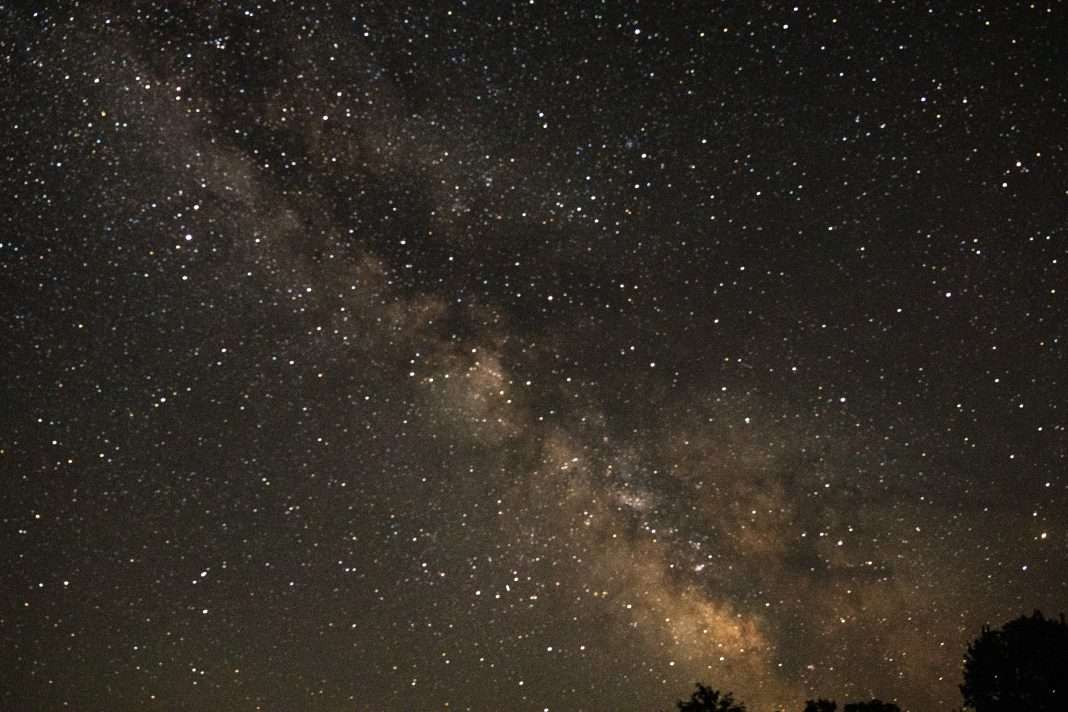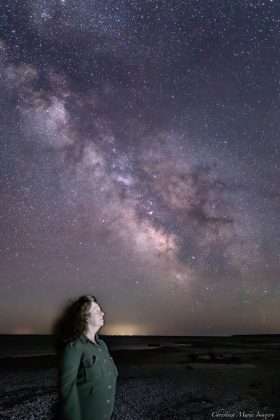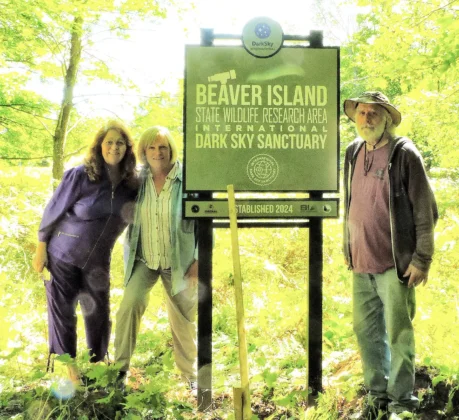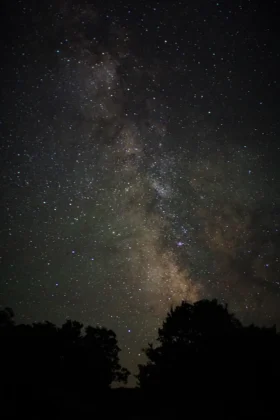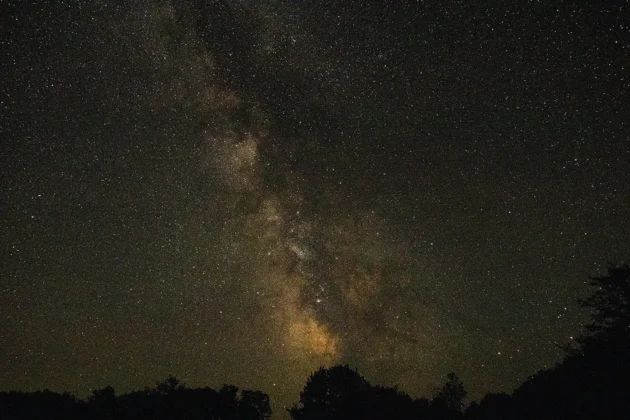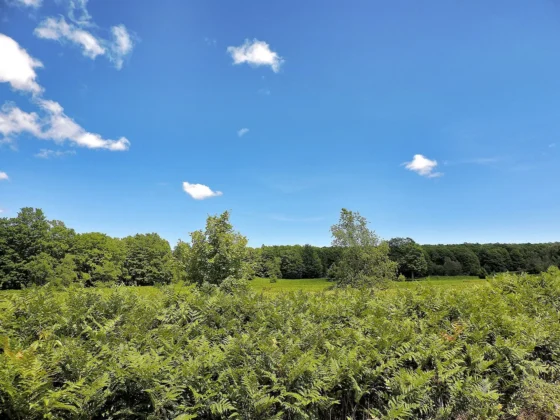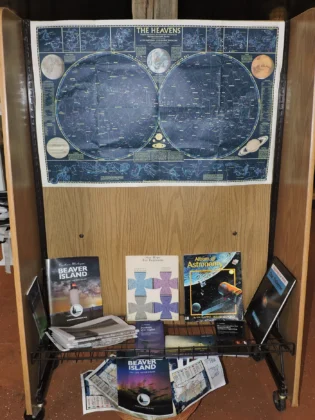There are only a handful of places left in the world where the night still knows how to be dark. I went to one.
My adventure to Beaver Island started before the crack of dawn with a two-and-a-half hour drive from my home to Charlevoix, Michigan. From there, I caught the ferry over to the island. I had the opportunity to take the hopper plane, but I wanted to experience the full two-hour journey across Lake Michigan—to really feel the vastness of the Great Lakes. I had never been in the middle of any of the Lakes before. It did not disappoint. It was a windy, overcast day in July, but the crystal blue water and open horizon reminded me how lucky we are to call this region home. When you’re far enough out to see nothing but water in every direction, it brings a quiet awe you can’t shake.

As we pulled into the port at St. James Harbor, it felt like I was a thousand miles from home. A quaint little town framed by the historic Beaver Island Harbor (St. James) Lighthouse at Whiskey Point, it looked more like an island village on the East Coast than anything you’d expect off the shores of Michigan. Sometimes, on my adventures, I have to pinch myself that I’m still in the Great Lakes Basin Region and that I get to call this place home.
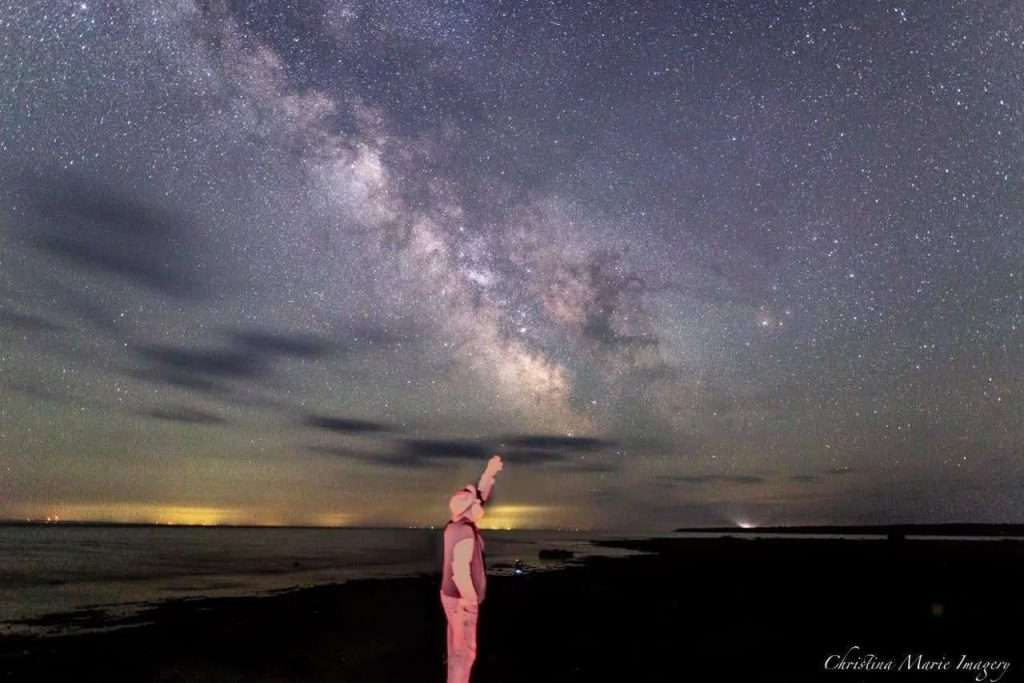
Waiting for me at the dock was Tony Miller—caretaker of the St. James Campground and operator of one of the Sanctuary’s massive telescopes, which I couldn’t wait to use under pristine skies. I had a few different lodging options, but camping is my jam, so that’s what I chose. Five days in a tent, right off the shore, overlooking Lake Michigan. It’s my favorite way to sleep.
I came to Beaver Island for something most people never get to witness—not just a view of the stars, but a rare place where the night sky still speaks in its original voice. I had experienced something similar once before in Big Bend National Park in Texas, but this promised to be even more spectacular. In July 2024, I arrived with my camping gear strapped on my back, cameras strapped across my shoulder, and an unshakable excitement for night to arrive. And did it arrive! Over the course of a few days, I was given the privilege of being escorted around this secluded island, deep into the heart of the newly designated Beaver Island State Wildlife Research Area International Dark Sky Sanctuary.
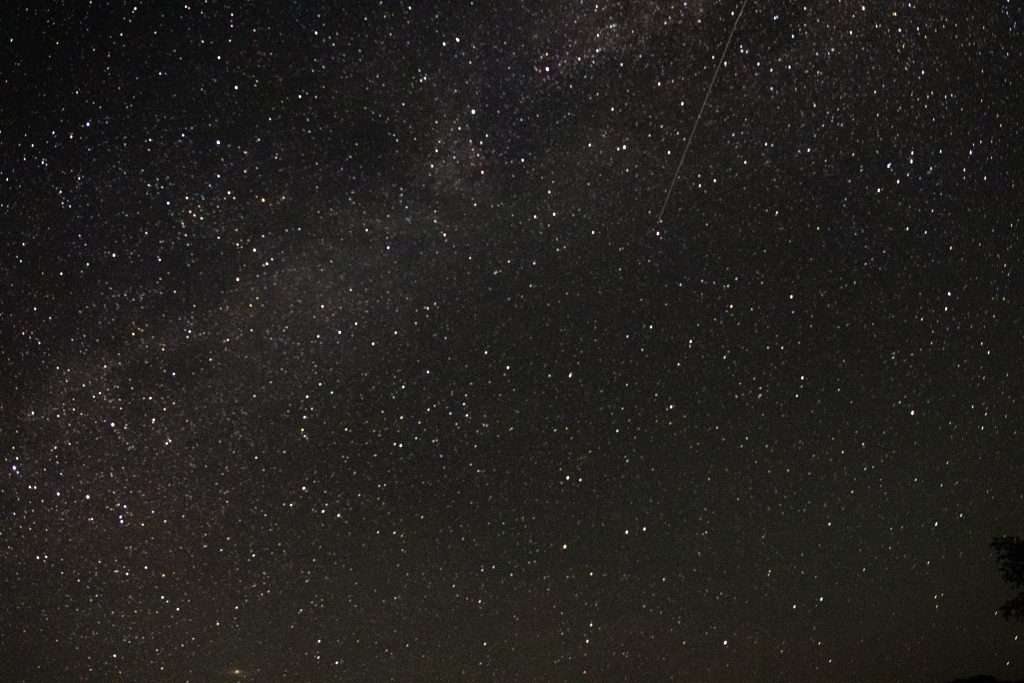
It’s hard to explain what it feels like to stand in the middle of absolute darkness—no streetlights, no hum of electricity, no interference. Just the stillness of the night, and a canvas of stars so dense it feels like the universe is leaning in and you can reach up and touch them. It’s a spectacular sight to behold, indeed.
Most people on Earth will never experience this. According to DarkSky International, more than 80% of the world’s population lives under some form of light pollution. In the United States, it’s more than 99%. The stars we think we’re seeing aren’t the stars that exist—they’re the survivors of a slow erasure. And that’s what makes Beaver Island’s sanctuary not just remarkable, but sacred.
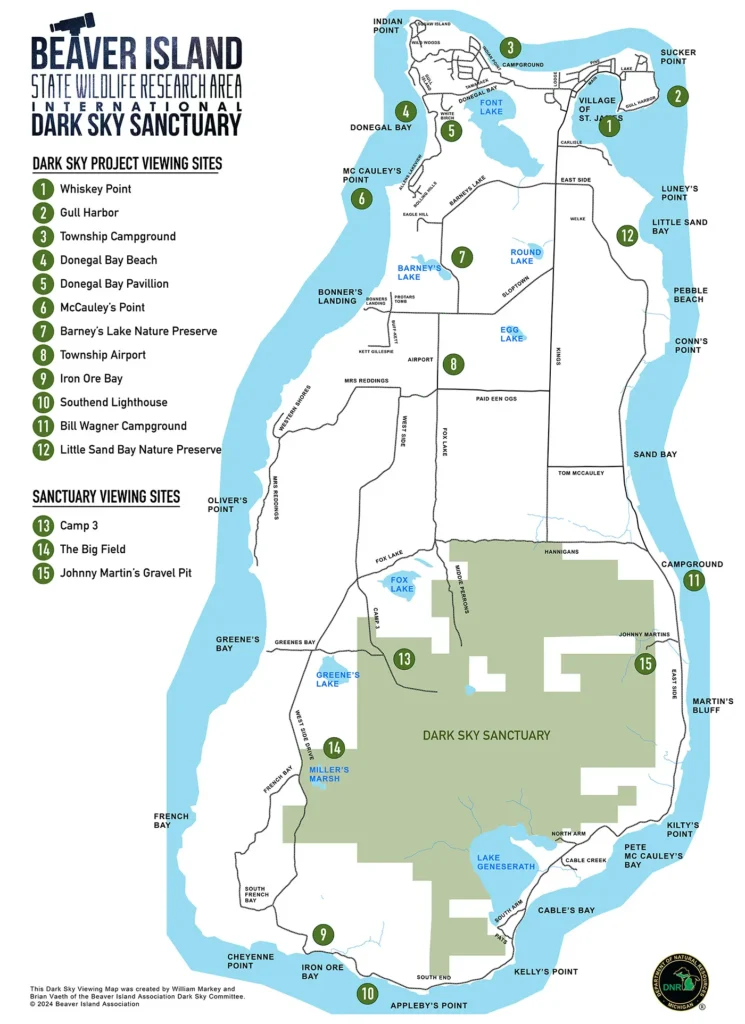
Set far off Michigan’s northern coast and only accessible by ferry or small plane, Beaver Island is part of the UNESCO-recognized Obtawaing Biosphere. This geographic isolation is exactly what makes it a stronghold for ecological preservation—and now, night sky preservation, too.
In April 2024, DarkSky International officially designated the Beaver Island State Wildlife Research Area as Michigan’s first International Dark Sky Sanctuary. That status places it among only 23 such sanctuaries in the entire world. Unlike Dark Sky Parks, which are typically more accessible and focus on public engagement, Sanctuaries are remote, often uninhabited or undeveloped, and are selected specifically because of their near-pristine night skies. The sanctuary designation is reserved for the rarest, most vulnerable dark sky sites—places where light pollution is almost nonexistent and where conservation must take precedence over tourism.
Spanning more than 9,100 acres of protected public and research lands—including 230 acres owned by Central Michigan University at Miller’s Marsh—the sanctuary sits in some of the darkest skies in North America. Sky Quality Meter readings on the island routinely measure at 21.6 magnitudes per square arcsecond, nearing the highest possible darkness rating on the global Bortle Scale. From the island’s western edge, you’re actually gazing into Bortle Class 1 skies—the rarest and least light-polluted skies in the world. Isn’t Michigan magnificent?
The sights are what you dream about: bands of the Milky Way overhead (I captured my first images of this celestial wonder. The excitement was real.), meteor showers streaking across the darkness, planetary phases that feel close enough to touch, and occasional glimpses of aurora and zodiacal light. The sanctuary itself is completely off-grid—no electric lights inside the boundary—and only red lights or safety lighting are allowed. I was gifted a small red light to help illuminate when I needed to more than feel my way through what I was doing. Vehicles are limited to seasonal roads, and trails are marked for stargazing access, including the Big Field on West Side Road, the sanctuary’s main viewing area.
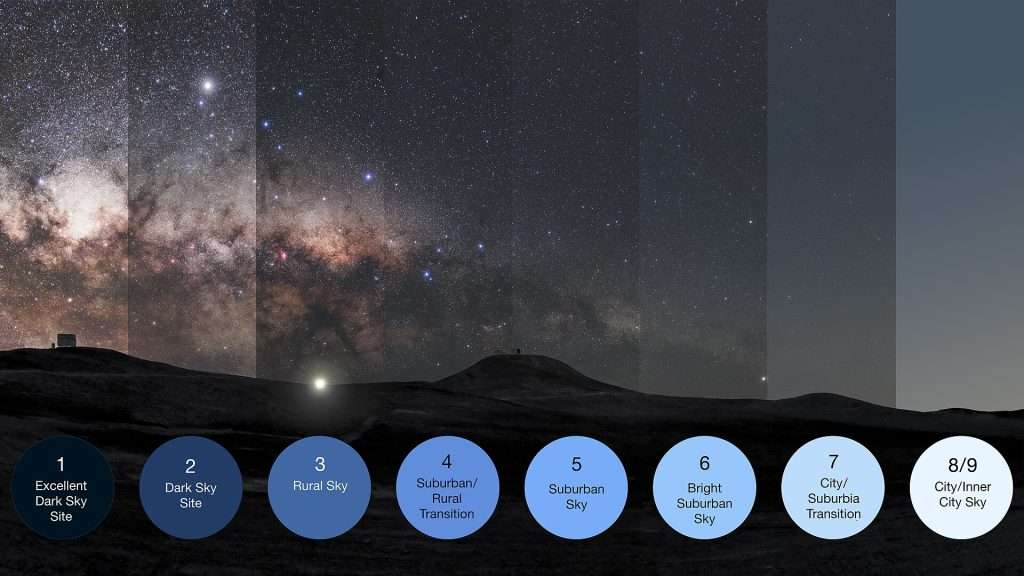
On the evening of our visit to the actual sanctuary, it was a humid and still night. There was a small group of us—Cynthia, Tony, David (who taught me how to better capture images of the Milky Way—thank you David!), and Bill. All of them had been instrumental in making this happen in their own way, and though each had visited this sanctuary countless times, their excitement for the place felt as if they were seeing it for the first time—just as I was.
I had the privilege of gazing through the massive telescope, though it was a bit tall for me to get the full picture. The sky above was as clear as any night sky could be. I stood in awe of its beauty and wonder. It truly grounds you, because as you stand there and gaze, you can’t help but feel how we humans are a mere speck in its vastness. At this time of year, the Milky Way was showing to the East, coming up over the trees that hugged the border of the sanctuary. It was spectacular. You could fully see it with the naked eye, but when you looked through the lens of the camera and took the shot… it was breathtaking. We saw many shooting stars and a few satellites flying through the night sky. Aside from the satellites, it was perfect. Leave it to humans to mess up the perfection of the night sky.
Tony had me anticipating something spectacular with the Big Dipper, or was it the Little Dipper? I can’t remember which. It ended up being a joke. For the life of me, I cannot remember it, so be sure to ask him when you see him.
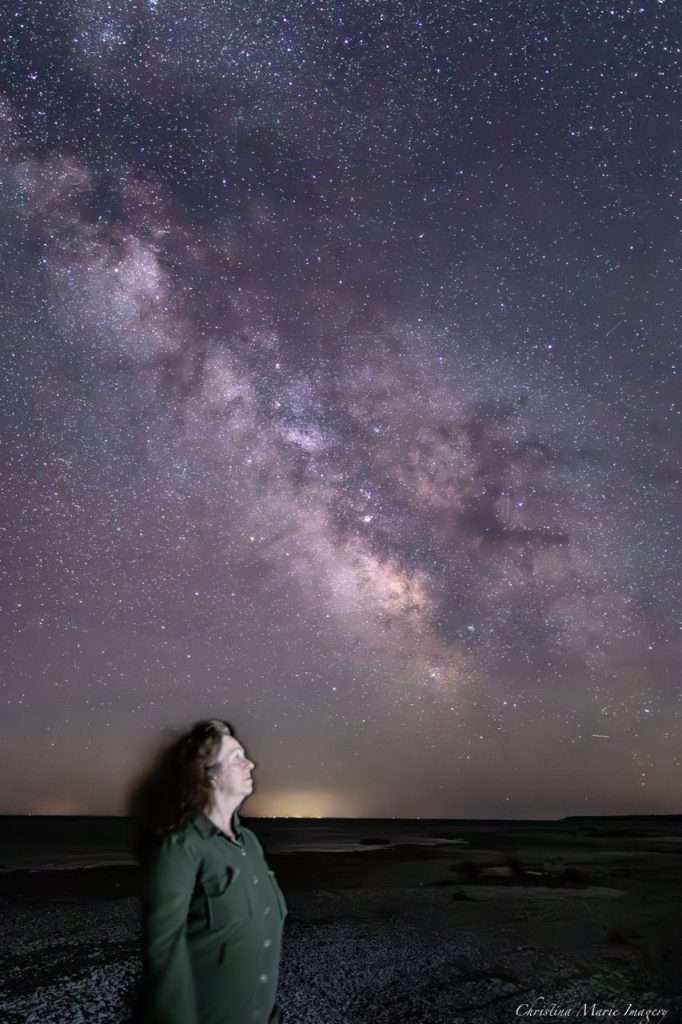
As the night moved on, the humidity created a blanket of fog that started to rapidly move in. Our lenses were fogging and dew was forming on our equipment. We didn’t have much notice to wrap things up before it would envelop us. The night was cut short, but the experience—unforgettable.
The official recognition for the sanctuary didn’t come easy. It was the result of years of community work led by the Beaver Island Dark Sky Project, formed by the Beaver Island Chamber and the Beaver Island Association, in partnership with Peaine and St. James Townships, the Michigan DNR, and Central Michigan University. One of the biggest advocates for the Dark Sky Sanctuary is the tireless Cynthia Hector Johnson. And I was privileged enough to have her as my main escort throughout my adventure, along with Tony. They took me “boodling” (a leisurely drive around the island, with stops for sightseeing and socializing) to every nook and cranny of the island: all the cool spots and some off-the-beaten-path ones.
Cynthia’s heart is definitely in this place. She was someone who worked tirelessly for years to make the designation a reality. It’s rare to meet someone who holds such a deep passion to preserve something so pristine and carry such compassion for what is so beyond reality for most. At many points during our adventures, I would find Cynthia gazing up at the sky with the quiet reverence of someone who knows it intimately. She didn’t say a word—but in those moments, I imagined what might be running through her mind. This place still remembers how to be wild. And I could see it in her face—she believes that with her whole being.
Her main hope is that the Beaver Island Sanctuary, along with the others around the world, will help people recognize the critical need to reduce light pollution. She schooled me on all the ways light pollution affects us as humans. Given the small amount of our population who have ever had the privilege to gaze up at a night sky, it’s not surprising.
Light pollution isn’t just about losing the stars—it disrupts the natural rhythms of life. For wildlife, artificial light at night can throw off migration, breeding, and feeding cycles. Birds become disoriented, sea turtles veer off course, and nocturnal animals lose the cover of darkness they rely on to survive. For humans, the consequences are just as real. Exposure to artificial light after dark has been linked to sleep disorders, increased stress, hormonal imbalance, and even higher risks of certain cancers. Our bodies evolved in sync with the sun and the stars. After all, we are made of the stars. This isn’t just poetry—it’s science. Every element in the human body was forged in the heart of a dying star. Carbon, oxygen, nitrogen, calcium, iron—these didn’t come from Earth. They were created in massive stellar explosions called supernovae billions of years ago and scattered across the universe. Eventually, they found their way into this planet, into the water, into the soil—and into us. So, when we look up at the night sky, we’re not just gazing into the distance. We’re looking at our origin story. That’s why it matters. That’s why protecting the night is personal. When we drown out the night, we lose more than just a view—we lose our balance.
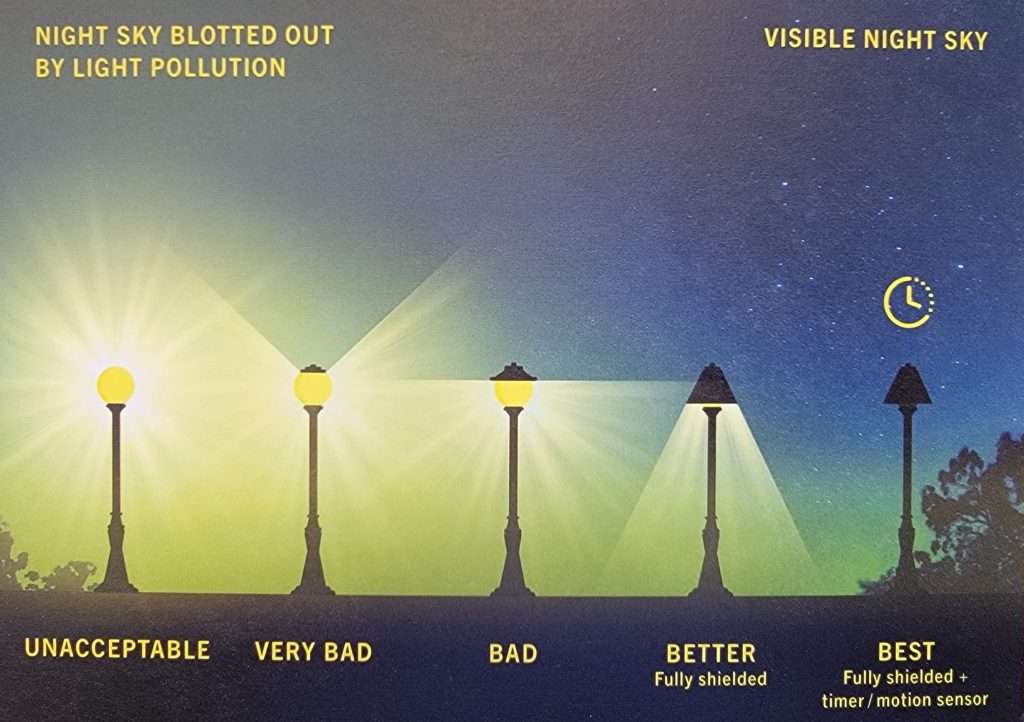
Paul Cole, President of the Beaver Island Chamber of Commerce, emphasized the growing draw of the sanctuary: “Increasingly we see that visitors come here to enjoy our uniquely dark skies. Designation of the DNR’s research area as a Dark Sky Sanctuary will help us protect that resource.”
Kevin Boyle, (Dark Sky Project) member and former Vice President of the Beaver Island Association, sees it as a legacy: “Combining the wilderness designation with recognition as a Dark Sky Sanctuary will help us protect this important resource. We hope to expand the boundaries to include the entire archipelago.”
“This certification demonstrates a significant commitment by the Beaver Island community, community officials, advocates, and resource managers to recognize and share the value and importance of natural night skies,” said Amber Harrison, Dark Sky Places Program Manager. “Through education and advocacy, these efforts protect the natural and cultural setting of the island against the threat of increased growth.”
Some places dazzle with noise. This one whispers with wonder. And it’s waiting for those who know how to listen.
Beaver Island’s dark sky isn’t just a tourist draw—it’s a living, breathing part of its identity. In a world that’s forgetting how to listen to the stars, and nature in general, this place remembers. And it doesn’t let you forget.
Practical Tips for Visiting Beaver Island
First and foremost, respect the island and the Sanctuary. Be respectful with your light pollution, this includes flashlights, headlamps, etc. Purchase red lights. Once properly equiped, aim for moonless nights and major meteor showers like the Perseids in August or the Geminids in December. Aurora season ramps up in spring and fall. While the sanctuary itself has no electricity, visitors can find lodging and amenities in the island’s main villages. I personally recommend the St. James Campground overlooking Lake Michigan. It has water, electricity, and showers. If you prefer your camping to be a bit more rustic, you cannot go wrong at Bill Wagner Memorial Campground. Anchored at Big Sand Bay, you will relish the panormaic views of Lake Michigan. There is a pump for water, but no electricy or showers; and it’s only $5/night on a first come first served basis with no reservations.
If you’re in the mood for something more glamorous, Beaver Island Retreat is spectacular. Owners Maria and Brian have built an incredible glamping retreat with sweeping views of the night sky, spa-quality bathrooms, and an outdoor shared bar and spectacular kitchen with an oversized grill (they also have grills at each campsite), with BYO alcohol to share, because they don’t have a liquor license. But you’re welcome to bring your own, and they have a bar area fully stocked with all the necessities. A couple was serving up margaritas when I was visiting in celebration of one of their birthdays.
Travel in is via ferry from Charlevoix or by plane (weather permitting). Once on the island, trailheads and maps can be found through the Dark Sky Island website or Beaver Island Community Center.
Lastly, Enjoy. Enjoy the calmness and peachfulness and the magic of this unique Michigan Sanctuary.








